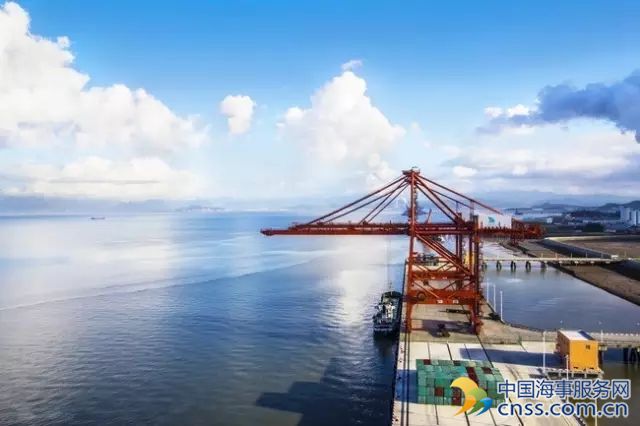Tankers: VLCC earnings under pressure as fleet grows – brokers

VLCC earnings are likely to come under downward pressure in the medium-term on a combination of a rise in oil stocks, cuts in crude output, a larger fleet and more efficiency in ports, according to tanker market players.
VLCC earnings did rebound last quarter when Asian refineries returned from maintenance, demand for oil rose and there was a recovery in exports by Nigeria after weather induced delays. But the rise then petered out.
“The output cuts announced by exporting countries is already having a bearing on the freight rates,” a Beijing-based VLCC broker told S&P Global Platts.
A VLCC carries around 2 million barrels of crude and lower output can mean reduced trade flows.
Platts Tuesday assessed the key Persian Gulf to Japan route at Worldscale 54, down w3.5 points on the day.
The supply of crude tankers rose by a net 5.7% last year, more than for the entire 2013-15 period combined while a further growth of around 4.5% is expected in 2017, according to estimates by international shipping brokerage and consultancy Simpson, Spence and Young, or SSY.
The VLCC fleet grew by almost 7% last year and another 4% expansion is expected in 2017, SSY’s estimates showed.
“The high stockpiles [of crude] are set to limit trade flows in the near-term,” Michael Xu, a Singapore-based partner at SSY, told the 7th Enmore International Oil Tanker Summit in Beijing last week.
VLCC earnings on the Persian Gulf-Japan route have so far averaged around $36,000/day in 2017, Xu said.
Last year’s average was $40,900/day and in 2015 it was $65,600/day — the highest since the peak reached in 2008-2009, the estimates showed.
“Negative factors are building in outlook with both OPEC and non-OPEC countries cutting output and trimming cargo supply,” Xu said.
There are signs of destocking but global stocks of oil are still holding up at high levels, he said, adding that growth in refinery throughput is slowing because of heavy maintenance in both Asia and the US.
This removed around 1.2 million b/d of oil output in February in the US while the corresponding figure for Asia in March is likely to be 2.0 million b/d, according to industry estimates.
Fleet efficiency is better now because of de-congestion at ports while the trade patterns are changing resulting in less ballasting of ships.
The pledged cuts in crude output for the Persian Gulf and Red Sea region during the first half of 2017 are estimated to be 1.0 million b/d, Xu said.
The cut in output comes as the average waiting time for VLCCs at Chinese ports has declined to six days last quarter from over nine days in the first quarter of 2016, he said.
Nevertheless, there are some supportive factors for the VLCC earnings such as sustained demand from independent refineries, new refining capacities, less Chinese production and the possibility of shipments from the Atlantic basin to Asia because of output cuts by OPEC countries, Xu said.
CHINA OUTLOOK
China’s domestic oil production fell 310,000 b/d last year, and a further drop is forecast for this year. China has also postponed plans to complete the second phase of its Strategic Petroleum Reserves to 2020 from 2016-17.
The total combined capacity of the two phases is likely to be over 250 million barrels.
Commercial and regulatory factors such as the enforcement of the Ballast Water Management convention could also accelerate demolition of ships from this year, according to tanker market participants. More than 22% of the global VLCC fleet is 15 years old or more and is ripe for demolition.
On the supply front, the Middle East continues to be the largest supplier of crude to China at over 3.7 million b/d compared with a combined total of over 2.2 million b/d from West Africa, the Caribbean and Latin America last year, Xu said.
Among the shipping companies, the largest number of spot VLCC fixtures to China last year were done by China Merchants Group at over 36 million mt followed by Cosco around 32 million mt and Ocean Tankers’ 15 million mt. Anangel and Euronav are estimated to have done 10 million mt each, he said.
Among the spot VLCC cargoes that are discharging at Chinese ports, companies such as Statoil, Vitol, Socar, ST Shipping and Trafigura have shown a significant increase in volumes.
Fixtures on behalf of Statoil rose above 3.5 million mt last year from around 700,000 mt in 2015, Xu said. The corresponding increase for Vitol and Trafigura is to over 2 million mt from around 200,000 mt and 1.8 million from less than 1 million mt, respectively, he said.
Fixtures for ST Shipping and Socar for China are estimated at 1 million and nearly 2 million mt respectively, he added.
In the case of India, imports from Latin America and the Caribbean declined last year and shipments rose from Iran while small volumes are also imported from the Mediterranean, Xu said. More than one-third of India’s crude oil imports are now from sources other than the Middle East.
Source: Platts
HEADLINES
- Do shipping markets want Biden or Trump for the win?
- All 18 crew safe after fire on Japanese-owned tanker off Singapore
- Singapore launching $44m co-investment initiative for maritime tech start-ups
- Cosco debuts Global Shipping Industry Chain Cooperation Initiative
- US warns of more shipping sanctions
- China continues seaport consolidation as Dalian offer goes unconditional